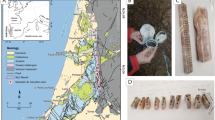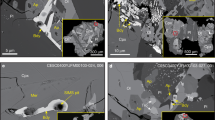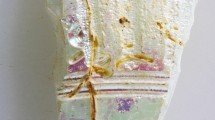Abstract
THE criticism offered by Drs. Hoekstra and Katz is relevant in stressing certain chemical difficulties which may defy solution by conventional analyses—mineral chemists know such problems too well, for example, the role of iron in many minerals. They rely on chemical analyses of uraninites for their views; but I am suspicious of such analyses as they still report lead as PbO, when that of radiogenic origin should be PbO2; that due to, say, galena, would be correctly given as PbO. Such duality exists in the position of oxygen, too, as it takes a double role crystallographically in many uraninites—such data cannot adequately be determined chemically.
This is a preview of subscription content, access via your institution
Access options
Subscribe to this journal
Receive 51 print issues and online access
$199.00 per year
only $3.90 per issue
Buy this article
- Purchase on Springer Link
- Instant access to full article PDF
Prices may be subject to local taxes which are calculated during checkout
Similar content being viewed by others
Author information
Authors and Affiliations
Rights and permissions
About this article
Cite this article
WASSERSTEIN, B. Age of Uraninites from Crystallographic Data. Nature 175, 605–606 (1955). https://doi.org/10.1038/175605b0
Issue Date:
DOI: https://doi.org/10.1038/175605b0
This article is cited by
-
Age of Uraninites from Dimensions of their Unit Cells
Nature (1955)
Comments
By submitting a comment you agree to abide by our Terms and Community Guidelines. If you find something abusive or that does not comply with our terms or guidelines please flag it as inappropriate.



